About Tim Flach and Richard O. Pfum
Tim Flach's mission as a photographer is to better connect people to the natural world. His previous books from Abrams include Endangered (2017), More Than Human (2012), Dogs (2010), and Equus (2008). An honorary fellow of the Royal Photographic Society, he lives and works in London.
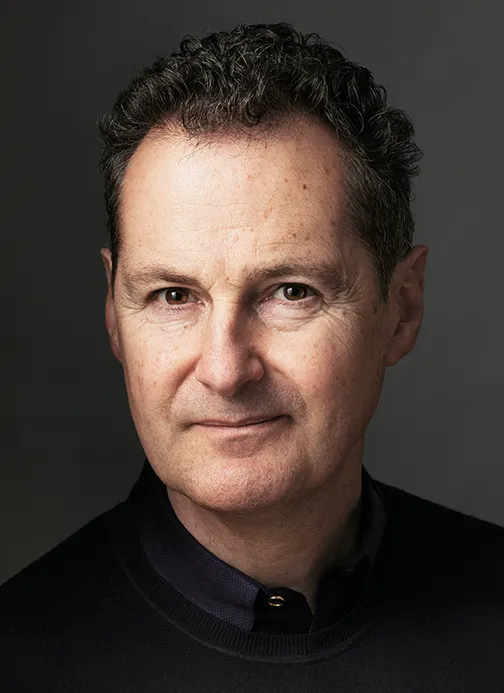
Richard O. Prum is the author of The Evolution of Beauty (2017), named one of the best books of the year by the New York Times and a finalist for the Pulitzer Prize. A professor of ornithology at Yale University and MacArthur Fellow, he lives in New Haven, Connecticut.
About the book
Birds of the world are portrayed in all their colourful glory by Tim Flach, the world's leading animal photographer. Radiating grace, intelligence, and humor, and always in motion, birds tantalize the human imagination.
Working for years in his studio and the field, Tim Flach has portrayed nature's most exquisite creatures alertly at rest or dramatically in flight, capturing intricate feather patterns and subtle coloration invisible to the naked eye.

Book credit: Birds by Tim Flach, text by Richard Prum (Abrams, £45)
Image credit: © 2021 Tim Flach
From familiar friends to marvelous rarities, Flach's birds convey the beauty and wonder of the natural world. Here are all manner of songbirds, parrots, and birds of paradise; birds of prey, water birds, and theatrical domestic breeds. The brilliant ornithologist Richard O. Prum is our guide to this magical kingdom.
To view the images as a slideshow, click on the arrows in the top right-hand corner of the photos below.
Toco toucan
Scientific name: Ramphastos toco
Range: Brazil, Bolivia, Argentina, Guyana, French Guiana, and Peru
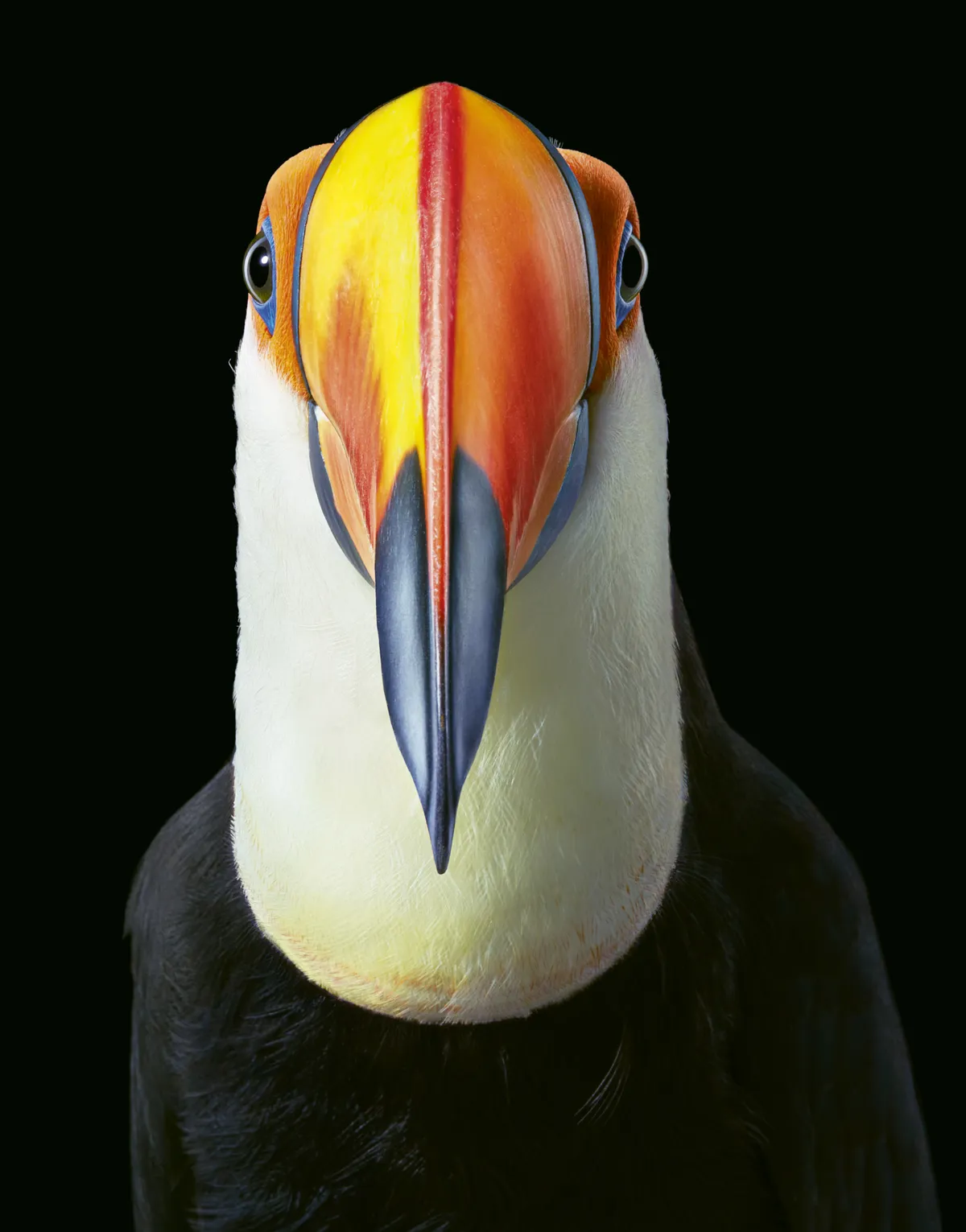
Recognise this character? That could be because in the early 1930s, the British artist and advertiser John Gilroy turned a caricature of the toco toucan into one of the most visible corporate mascots of the twentieth century—the Guinness toucan, which balanced a glass of the beer on its sizable beak.
Toucans have gone on to become a cherished symbol of the rainforest and are now among the most popular birds in the world, gracing the covers of cereal boxes and starring in children’s cartoons.
Mandarin duck
Scientific name: Aix galericulata
Range: Japan, China, Taiwan, and Russia; introduced in Europe
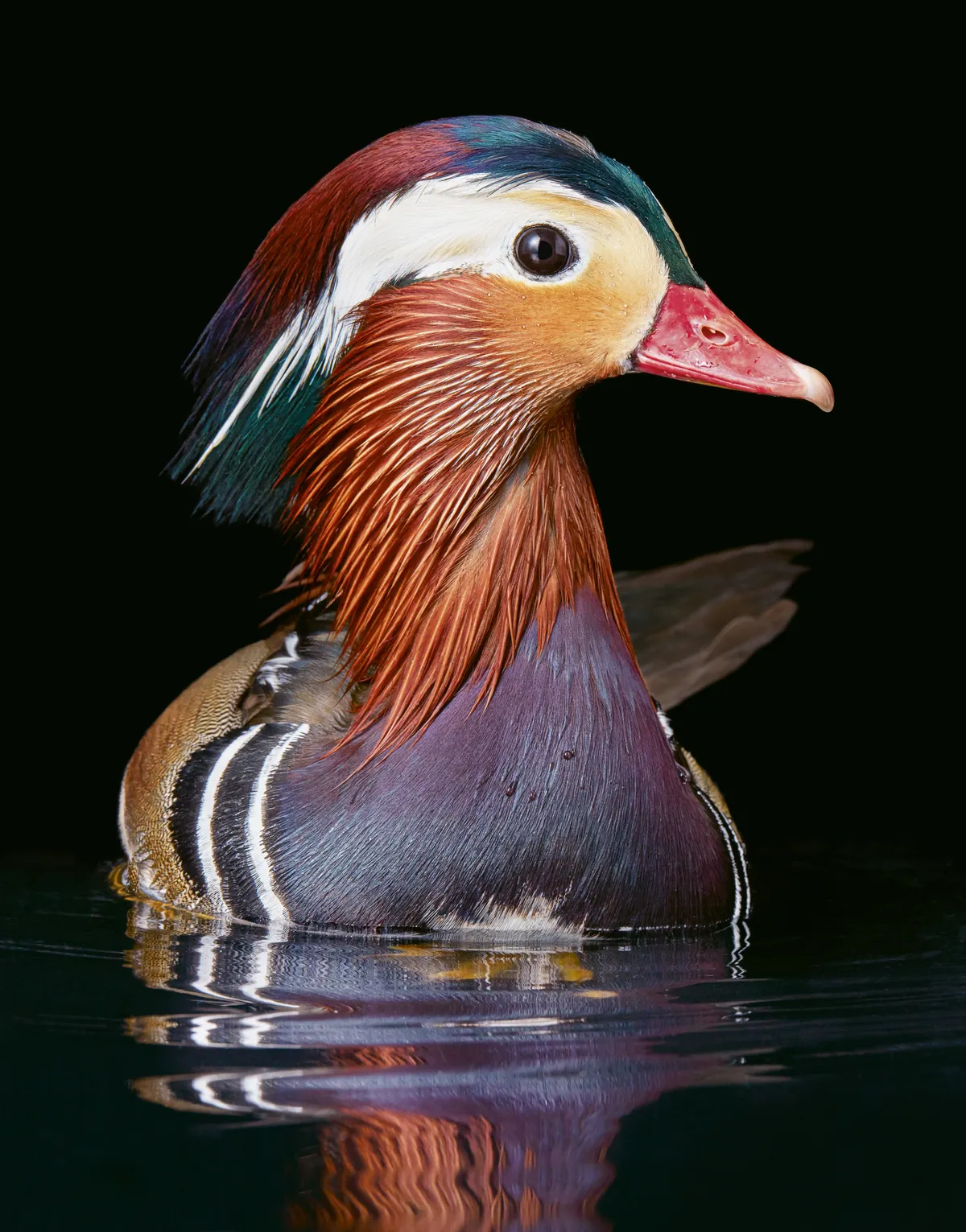
The male mandarin duck is a product of sexual selection, the evolutionary dynamic driven by female mate choice. As with most other ducks, the male plays no role in raising the young, so a female can choose her mate based primarily on his aesthetic appeal. This creates a strong selective pressure favouring the most extravagant males, and as females repeat this process over millions of generations, it can create incredibly beautiful birds.
American flamingo
Scientific name: Phoenicopterus ruber
Range: The Caribbean Islands and Central and South America
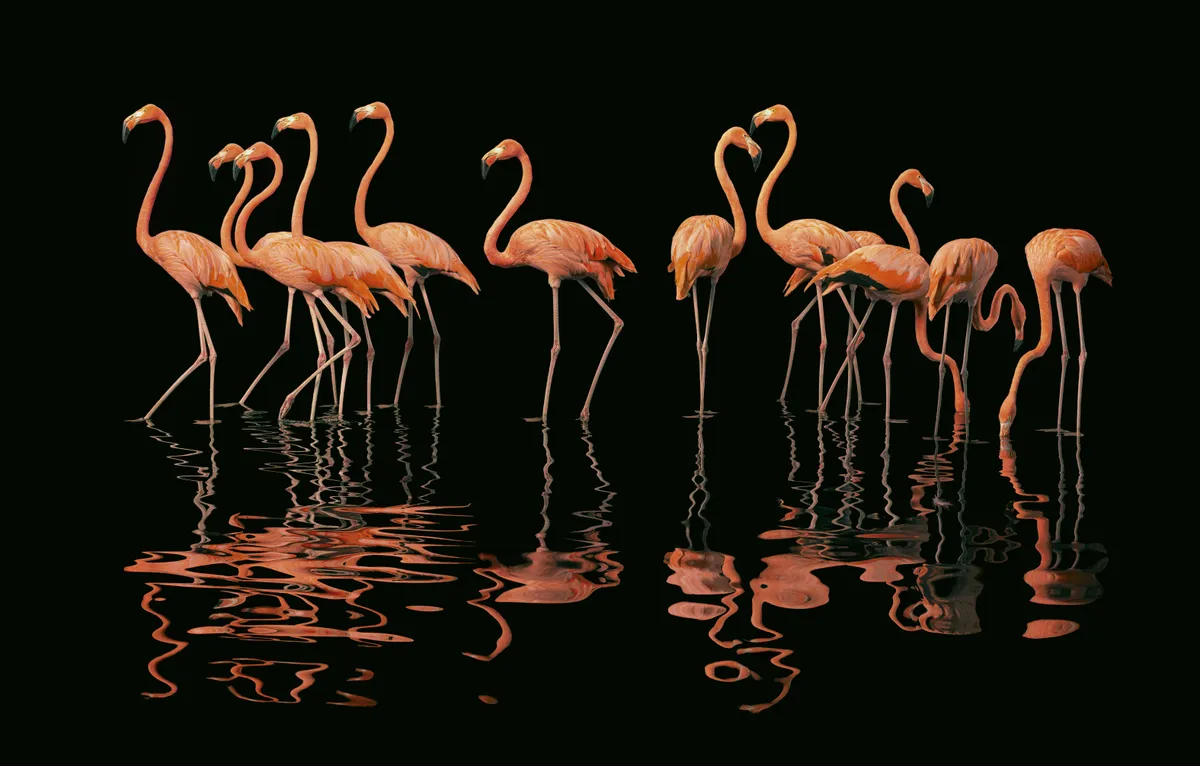
Unlike many other gregarious birds, flamingos, pictured here in a group, or “flamboyance,” are also unusually cooperative breeders: rather than defending just their own newly hatched offspring, the birds gather their ungainly, flightless young together in a creche, which is then defended by just a few designated guardians.
This innovative day-care system frees the rest of the adults to spend their entire day foraging, allowing the birds to gather more food and feed more mouths without increasing the risk of predation.
Grey crowned crane
Scientific Name: Balearica regulorum
Range: Southern Africa
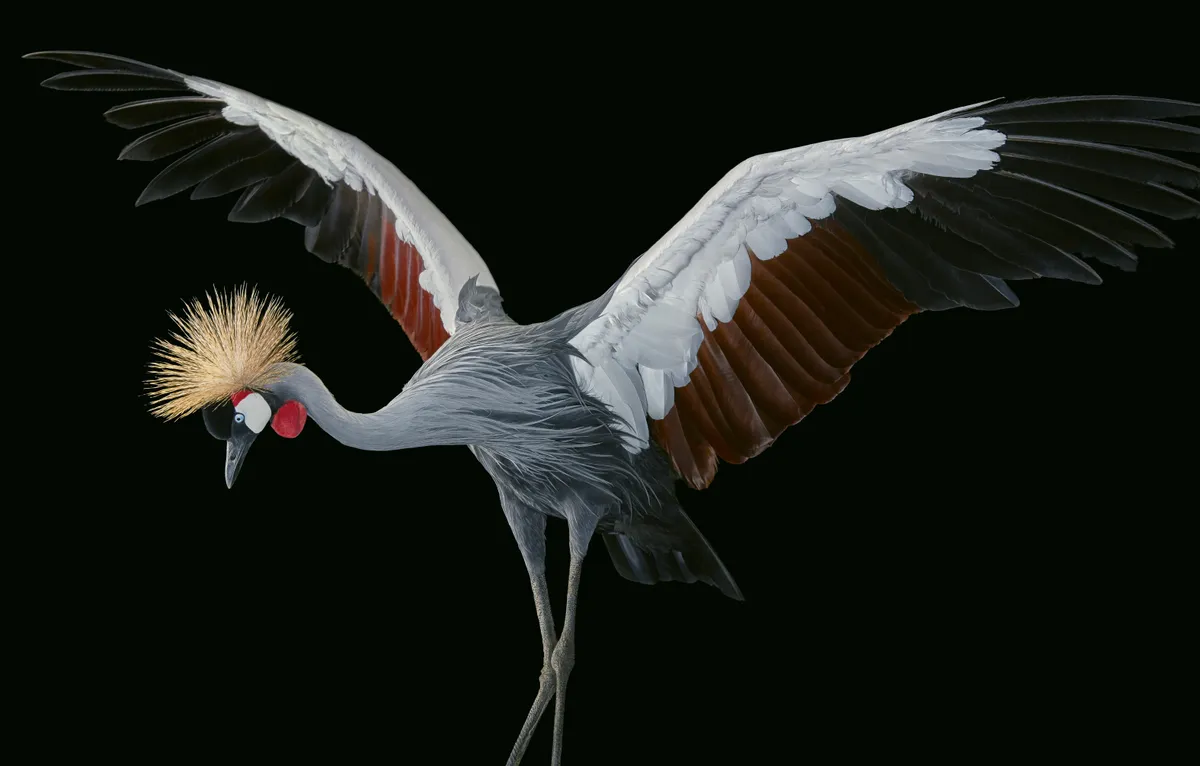
Unlike other cranes, who are incapable of perching, the grey crowned crane and the closely related black crowned crane both possess a prehensile rear toe that enables them to roost in trees, helping them avoid the numerous predators that lurk in the African savannahs where they live. Most other species of crane roost on the ground or in shallow water.
Atlantic puffin
Scientific name: Fratercula arctica
Range: North Atlantic Ocean and Arctic Ocean

These flamboyant birds spend most of their lives far out at sea, using their wings as flippers to propel
themselves through the water as they dive for small fish.
Each spring, however, they return to small, uninhabited islands to breed, where they use their colorful bills and feet to excavate the burrows inside which they lay their eggs. Occasionally reaching more than 4 feet (1 m) deep, these burrows shelter the chicks from predators and harsh winds, and a single pair of these long-living birds may reuse the same burrow for decades.
Gentoo penguin
Scientific name: Pygoscelis papua
Range: Southern Ocean
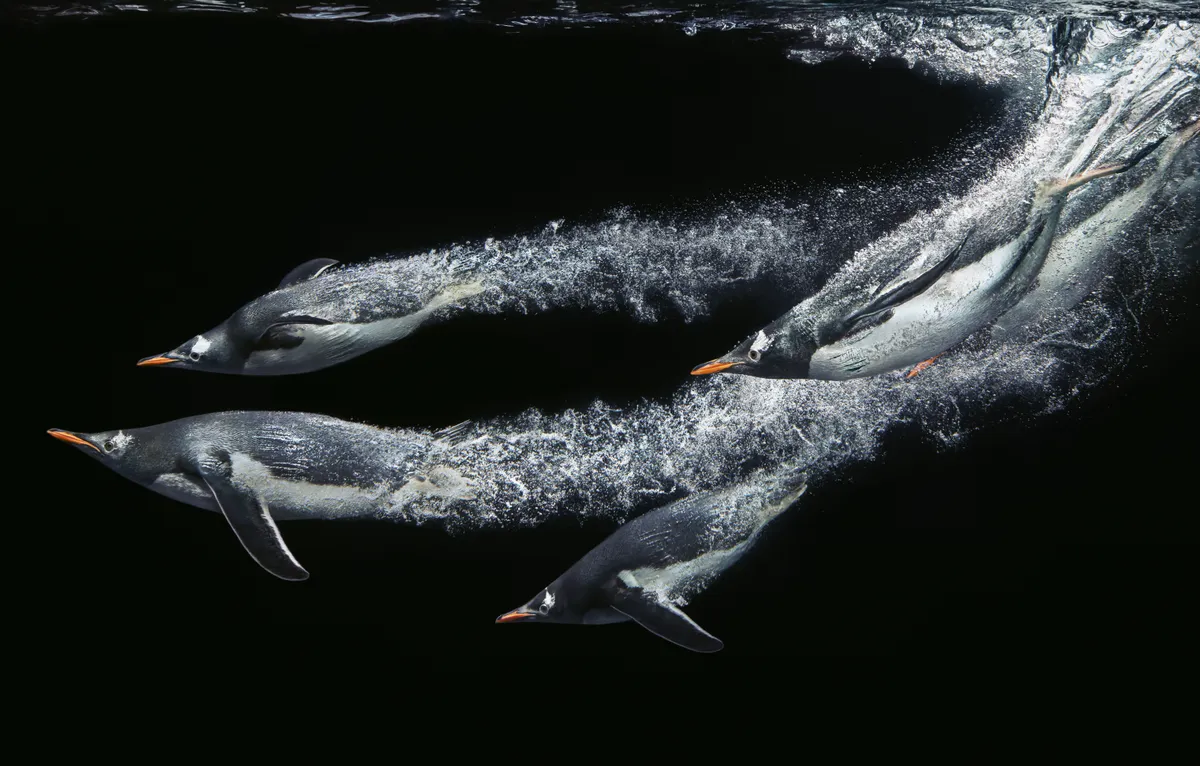
While penguins may be flightless, they are well adapted for flying through the water. Using its vestigial wings as paddles, its rear-set feet as propellers, and its stiffened tail feathers as rudders, the gentoo penguin can drive its torpedo-shaped body through the water at more than 22 miles (35 km) per hour—the fastest speed recorded by any swimming bird.
Knobbed hornbill
Scientific name: Rhyticeros cassidix
Range: Indonesia
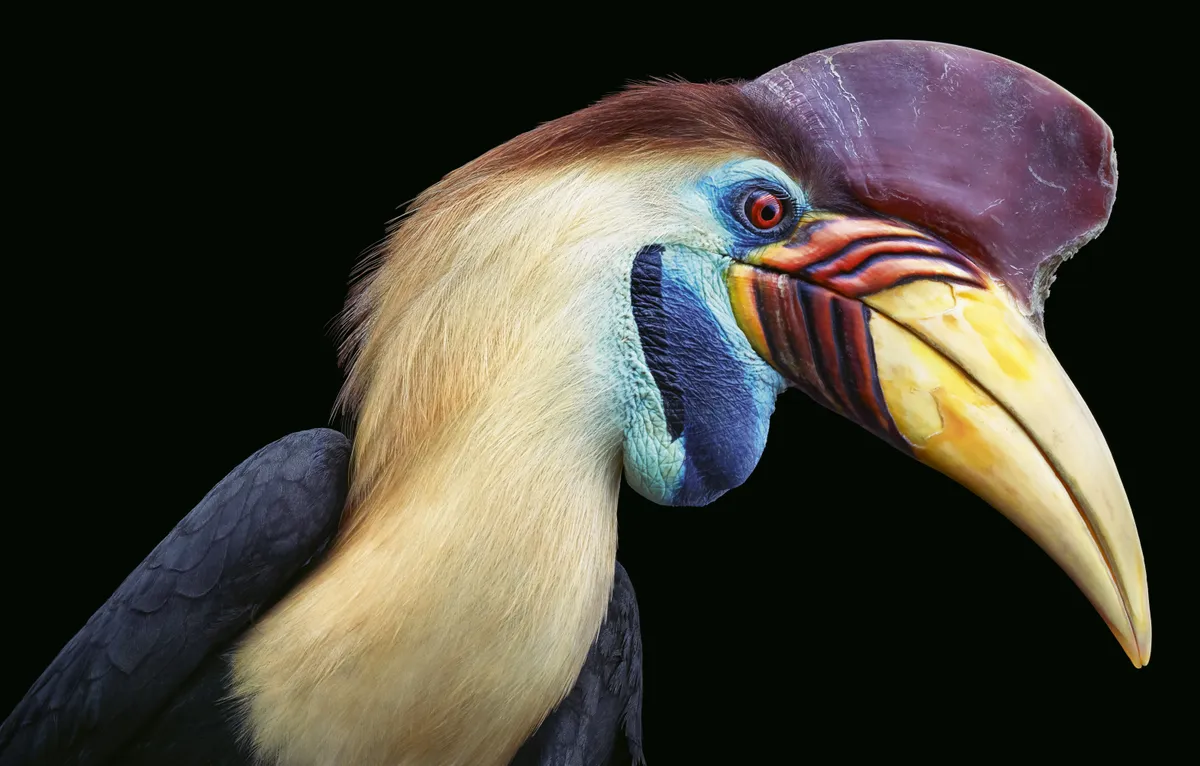
The breathtakingly beautiful bill of the knobbed hornbill is the result of colored pigments in the keratin coating. A bill is not a solid structure, but rather a hollow bony outgrowth of the skull sheathed in a thin layer of keratin—the same protein found in our fingernails. Like fingernails, this keratinous casing constantly regrows to heal nicks and scratches. Unlike us, birds can deposit colored pigments into the protein matrix as it grows.
Blue-throated macaw
Scientific name: Ara glaucogularis
Range: Bolivia
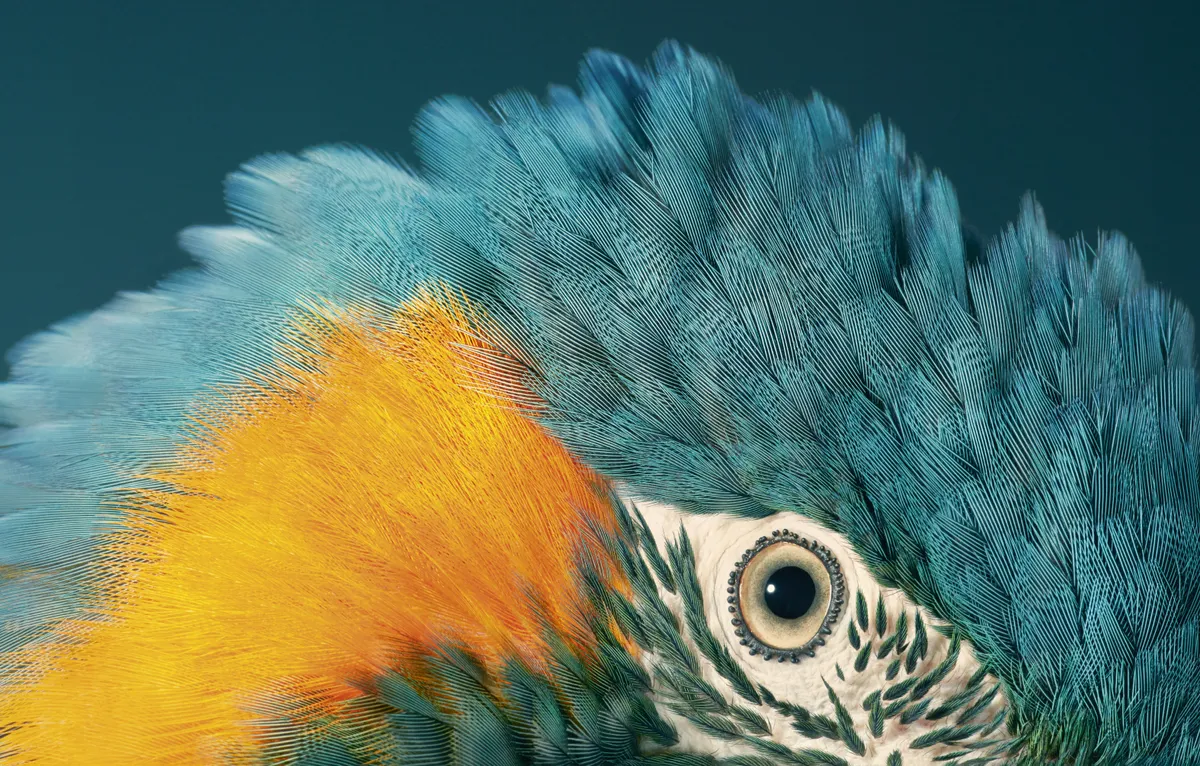
Back from the brink: once thought to be extinct in the wild, the blue-throated macaw was rediscovered by ornithologists living in the remote cattle pastures of central Bolivia in 1992. Since then, conservationists have taken drastic action to protect the bird, still listed as Critically Endangered, from wildlife trafficking, creating reserves to protect their habitat from poachers and even encouraging local Indigenous groups who had traditionally used macaw feathers in their ceremonial headdresses to use artificial feathers instead.
Red bird of paradise
Scientific name: Paradisaea rubra
Range: Indonesia

Over the past twenty-three million years, the forty-two species of bird of paradise all diverged from a single, crow-like ancestor into the breathtaking variety of forms now found on New Guinea and the surrounding islands.
This makes this family a textbook example of allopatric speciation: as different populations became geographically isolated from each other by tall mountain ranges or oceanic straits, different selective pressures and random genetic drift caused the various independent groups to evolve into distinct forms that could no longer interbreed.